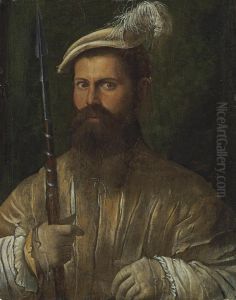Nicolo Dell'Abbate Paintings
Nicolo Dell'Abbate, born in either 1509 or 1512 in Modena, Italy, was a prominent figure in the 16th-century Italian Renaissance, specifically known for his role in the School of Fontainebleau, which significantly influenced French art. His early life in Modena, where he likely trained under the guidance of Antonio Begarelli, a local sculptor, set the groundwork for his later achievements in the arts. Dell'Abbate's early works reflected the Mannerist style, characterized by its elegant and elongated figures, which was becoming increasingly popular in Italy during his formative years.
Dell'Abbate's career took a pivotal turn when he moved to France around 1552, where he became involved with the School of Fontainebleau, an artistic movement that blended Italian Mannerism with French decorative elements, creating a distinctive and influential style. At Fontainebleau, he worked alongside other Italian artists, including Rosso Fiorentino and Francesco Primaticcio, contributing to the decoration of the royal château with frescoes, stucco reliefs, and other ornamental works. His contributions helped to disseminate Italian Renaissance aesthetics into French art, fostering a cross-pollination of ideas and techniques between the two cultures.
Dell'Abbate's influence extended beyond the walls of Fontainebleau, as he also engaged in landscape painting, a genre in which he was particularly innovative. His landscapes, characterized by their serene beauty and the integration of classical and mythological themes, were among the early examples that shaped the development of this genre in Western art. These works not only reflect Dell'Abbate's mastery of the Mannerist style but also anticipate the naturalism that would become prominent in later European painting.
Nicolo Dell'Abbate's work remained influential after his death in 1571, bridging Italian Renaissance influences with the evolving styles of French art. His legacy is seen in the continuation of the Mannerist style in France and in the development of French landscape painting. His death marked the end of a significant chapter in the cross-cultural exchange between Italy and France during the Renaissance, underscoring his role as a key figure in the international spread of Renaissance artistic ideals.
